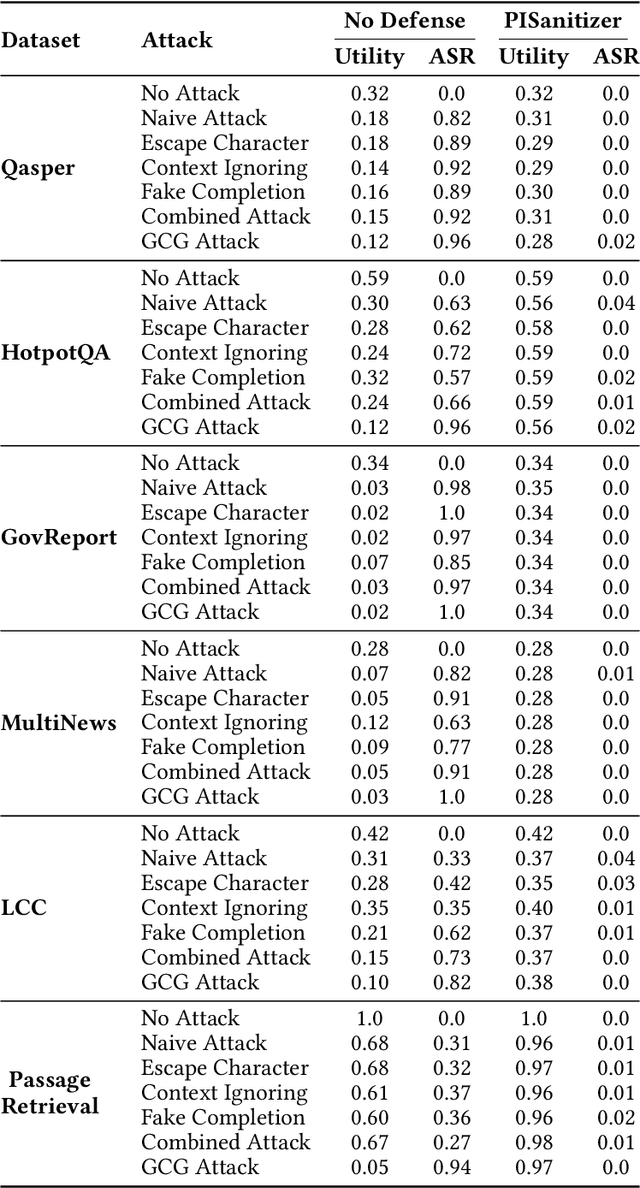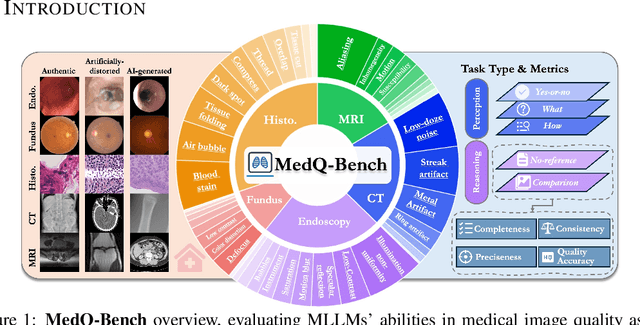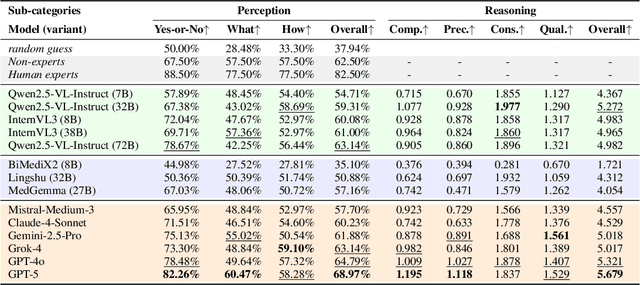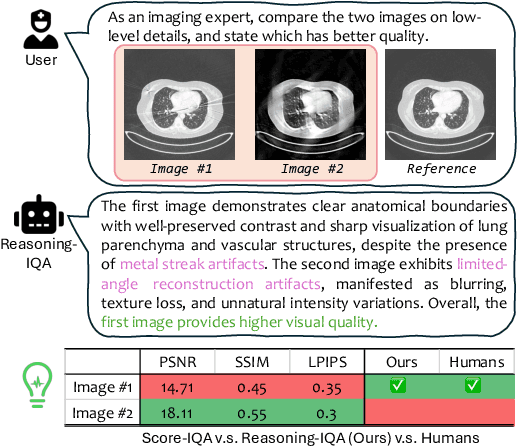Ying Chen
Multimodal Interpretation of Remote Sensing Images: Dynamic Resolution Input Strategy and Multi-scale Vision-Language Alignment Mechanism
Dec 29, 2025Abstract:Multimodal fusion of remote sensing images serves as a core technology for overcoming the limitations of single-source data and improving the accuracy of surface information extraction, which exhibits significant application value in fields such as environmental monitoring and urban planning. To address the deficiencies of existing methods, including the failure of fixed resolutions to balance efficiency and detail, as well as the lack of semantic hierarchy in single-scale alignment, this study proposes a Vision-language Model (VLM) framework integrated with two key innovations: the Dynamic Resolution Input Strategy (DRIS) and the Multi-scale Vision-language Alignment Mechanism (MS-VLAM).Specifically, the DRIS adopts a coarse-to-fine approach to adaptively allocate computational resources according to the complexity of image content, thereby preserving key fine-grained features while reducing redundant computational overhead. The MS-VLAM constructs a three-tier alignment mechanism covering object, local-region and global levels, which systematically captures cross-modal semantic consistency and alleviates issues of semantic misalignment and granularity imbalance.Experimental results on the RS-GPT4V dataset demonstrate that the proposed framework significantly improves the accuracy of semantic understanding and computational efficiency in tasks including image captioning and cross-modal retrieval. Compared with conventional methods, it achieves superior performance in evaluation metrics such as BLEU-4 and CIDEr for image captioning, as well as R@10 for cross-modal retrieval. This technical framework provides a novel approach for constructing efficient and robust multimodal remote sensing systems, laying a theoretical foundation and offering technical guidance for the engineering application of intelligent remote sensing interpretation.
Seedance 1.5 pro: A Native Audio-Visual Joint Generation Foundation Model
Dec 23, 2025Abstract:Recent strides in video generation have paved the way for unified audio-visual generation. In this work, we present Seedance 1.5 pro, a foundational model engineered specifically for native, joint audio-video generation. Leveraging a dual-branch Diffusion Transformer architecture, the model integrates a cross-modal joint module with a specialized multi-stage data pipeline, achieving exceptional audio-visual synchronization and superior generation quality. To ensure practical utility, we implement meticulous post-training optimizations, including Supervised Fine-Tuning (SFT) on high-quality datasets and Reinforcement Learning from Human Feedback (RLHF) with multi-dimensional reward models. Furthermore, we introduce an acceleration framework that boosts inference speed by over 10X. Seedance 1.5 pro distinguishes itself through precise multilingual and dialect lip-syncing, dynamic cinematic camera control, and enhanced narrative coherence, positioning it as a robust engine for professional-grade content creation. Seedance 1.5 pro is now accessible on Volcano Engine at https://console.volcengine.com/ark/region:ark+cn-beijing/experience/vision?type=GenVideo.
HookMIL: Revisiting Context Modeling in Multiple Instance Learning for Computational Pathology
Dec 20, 2025Abstract:Multiple Instance Learning (MIL) has enabled weakly supervised analysis of whole-slide images (WSIs) in computational pathology. However, traditional MIL approaches often lose crucial contextual information, while transformer-based variants, though more expressive, suffer from quadratic complexity and redundant computations. To address these limitations, we propose HookMIL, a context-aware and computationally efficient MIL framework that leverages compact, learnable hook tokens for structured contextual aggregation. These tokens can be initialized from (i) key-patch visual features, (ii) text embeddings from vision-language pathology models, and (iii) spatially grounded features from spatial transcriptomics-vision models. This multimodal initialization enables Hook Tokens to incorporate rich textual and spatial priors, accelerating convergence and enhancing representation quality. During training, Hook tokens interact with instances through bidirectional attention with linear complexity. To further promote specialization, we introduce a Hook Diversity Loss that encourages each token to focus on distinct histopathological patterns. Additionally, a hook-to-hook communication mechanism refines contextual interactions while minimizing redundancy. Extensive experiments on four public pathology datasets demonstrate that HookMIL achieves state-of-the-art performance, with improved computational efficiency and interpretability. Codes are available at https://github.com/lingxitong/HookMIL.
Probing Scientific General Intelligence of LLMs with Scientist-Aligned Workflows
Dec 18, 2025Abstract:Despite advances in scientific AI, a coherent framework for Scientific General Intelligence (SGI)-the ability to autonomously conceive, investigate, and reason across scientific domains-remains lacking. We present an operational SGI definition grounded in the Practical Inquiry Model (PIM: Deliberation, Conception, Action, Perception) and operationalize it via four scientist-aligned tasks: deep research, idea generation, dry/wet experiments, and experimental reasoning. SGI-Bench comprises over 1,000 expert-curated, cross-disciplinary samples inspired by Science's 125 Big Questions, enabling systematic evaluation of state-of-the-art LLMs. Results reveal gaps: low exact match (10--20%) in deep research despite step-level alignment; ideas lacking feasibility and detail; high code executability but low execution result accuracy in dry experiments; low sequence fidelity in wet protocols; and persistent multimodal comparative-reasoning challenges. We further introduce Test-Time Reinforcement Learning (TTRL), which optimizes retrieval-augmented novelty rewards at inference, enhancing hypothesis novelty without reference answer. Together, our PIM-grounded definition, workflow-centric benchmark, and empirical insights establish a foundation for AI systems that genuinely participate in scientific discovery.
PISanitizer: Preventing Prompt Injection to Long-Context LLMs via Prompt Sanitization
Nov 13, 2025



Abstract:Long context LLMs are vulnerable to prompt injection, where an attacker can inject an instruction in a long context to induce an LLM to generate an attacker-desired output. Existing prompt injection defenses are designed for short contexts. When extended to long-context scenarios, they have limited effectiveness. The reason is that an injected instruction constitutes only a very small portion of a long context, making the defense very challenging. In this work, we propose PISanitizer, which first pinpoints and sanitizes potential injected tokens (if any) in a context before letting a backend LLM generate a response, thereby eliminating the influence of the injected instruction. To sanitize injected tokens, PISanitizer builds on two observations: (1) prompt injection attacks essentially craft an instruction that compels an LLM to follow it, and (2) LLMs intrinsically leverage the attention mechanism to focus on crucial input tokens for output generation. Guided by these two observations, we first intentionally let an LLM follow arbitrary instructions in a context and then sanitize tokens receiving high attention that drive the instruction-following behavior of the LLM. By design, PISanitizer presents a dilemma for an attacker: the more effectively an injected instruction compels an LLM to follow it, the more likely it is to be sanitized by PISanitizer. Our extensive evaluation shows that PISanitizer can successfully prevent prompt injection, maintain utility, outperform existing defenses, is efficient, and is robust to optimization-based and strong adaptive attacks. The code is available at https://github.com/sleeepeer/PISanitizer.
Raspi$^2$USBL: An open-source Raspberry Pi-Based Passive Inverted Ultra-Short Baseline Positioning System for Underwater Robotics
Nov 10, 2025Abstract:Precise underwater positioning remains a fundamental challenge for underwater robotics since global navigation satellite system (GNSS) signals cannot penetrate the sea surface. This paper presents Raspi$^2$USBL, an open-source, Raspberry Pi-based passive inverted ultra-short baseline (piUSBL) positioning system designed to provide a low-cost and accessible solution for underwater robotic research. The system comprises a passive acoustic receiver and an active beacon. The receiver adopts a modular hardware architecture that integrates a hydrophone array, a multichannel preamplifier, an oven-controlled crystal oscillator (OCXO), a Raspberry Pi 5, and an MCC-series data acquisition (DAQ) board. Apart from the Pi 5, OCXO, and MCC board, the beacon comprises an impedance-matching network, a power amplifier, and a transmitting transducer. An open-source C++ software framework provides high-precision clock synchronization and triggering for one-way travel-time (OWTT) messaging, while performing real-time signal processing, including matched filtering, array beamforming, and adaptive gain control, to estimate the time of flight (TOF) and direction of arrival (DOA) of received signals. The Raspi$^2$USBL system was experimentally validated in an anechoic tank, freshwater lake, and open-sea trials. Results demonstrate a slant-range accuracy better than 0.1%, a bearing accuracy within 0.1$^\circ$, and stable performance over operational distances up to 1.3 km. These findings confirm that low-cost, reproducible hardware can deliver research-grade underwater positioning accuracy. By releasing both the hardware and software as open-source, Raspi$^2$USBL provides a unified reference platform that lowers the entry barrier for underwater robotics laboratories, fosters reproducibility, and promotes collaborative innovation in underwater acoustic navigation and swarm robotics.
MedQ-Bench: Evaluating and Exploring Medical Image Quality Assessment Abilities in MLLMs
Oct 02, 2025



Abstract:Medical Image Quality Assessment (IQA) serves as the first-mile safety gate for clinical AI, yet existing approaches remain constrained by scalar, score-based metrics and fail to reflect the descriptive, human-like reasoning process central to expert evaluation. To address this gap, we introduce MedQ-Bench, a comprehensive benchmark that establishes a perception-reasoning paradigm for language-based evaluation of medical image quality with Multi-modal Large Language Models (MLLMs). MedQ-Bench defines two complementary tasks: (1) MedQ-Perception, which probes low-level perceptual capability via human-curated questions on fundamental visual attributes; and (2) MedQ-Reasoning, encompassing both no-reference and comparison reasoning tasks, aligning model evaluation with human-like reasoning on image quality. The benchmark spans five imaging modalities and over forty quality attributes, totaling 2,600 perceptual queries and 708 reasoning assessments, covering diverse image sources including authentic clinical acquisitions, images with simulated degradations via physics-based reconstructions, and AI-generated images. To evaluate reasoning ability, we propose a multi-dimensional judging protocol that assesses model outputs along four complementary axes. We further conduct rigorous human-AI alignment validation by comparing LLM-based judgement with radiologists. Our evaluation of 14 state-of-the-art MLLMs demonstrates that models exhibit preliminary but unstable perceptual and reasoning skills, with insufficient accuracy for reliable clinical use. These findings highlight the need for targeted optimization of MLLMs in medical IQA. We hope that MedQ-Bench will catalyze further exploration and unlock the untapped potential of MLLMs for medical image quality evaluation.
OceanGym: A Benchmark Environment for Underwater Embodied Agents
Sep 30, 2025Abstract:We introduce OceanGym, the first comprehensive benchmark for ocean underwater embodied agents, designed to advance AI in one of the most demanding real-world environments. Unlike terrestrial or aerial domains, underwater settings present extreme perceptual and decision-making challenges, including low visibility, dynamic ocean currents, making effective agent deployment exceptionally difficult. OceanGym encompasses eight realistic task domains and a unified agent framework driven by Multi-modal Large Language Models (MLLMs), which integrates perception, memory, and sequential decision-making. Agents are required to comprehend optical and sonar data, autonomously explore complex environments, and accomplish long-horizon objectives under these harsh conditions. Extensive experiments reveal substantial gaps between state-of-the-art MLLM-driven agents and human experts, highlighting the persistent difficulty of perception, planning, and adaptability in ocean underwater environments. By providing a high-fidelity, rigorously designed platform, OceanGym establishes a testbed for developing robust embodied AI and transferring these capabilities to real-world autonomous ocean underwater vehicles, marking a decisive step toward intelligent agents capable of operating in one of Earth's last unexplored frontiers. The code and data are available at https://github.com/OceanGPT/OceanGym.
A Survey of Scientific Large Language Models: From Data Foundations to Agent Frontiers
Aug 28, 2025



Abstract:Scientific Large Language Models (Sci-LLMs) are transforming how knowledge is represented, integrated, and applied in scientific research, yet their progress is shaped by the complex nature of scientific data. This survey presents a comprehensive, data-centric synthesis that reframes the development of Sci-LLMs as a co-evolution between models and their underlying data substrate. We formulate a unified taxonomy of scientific data and a hierarchical model of scientific knowledge, emphasizing the multimodal, cross-scale, and domain-specific challenges that differentiate scientific corpora from general natural language processing datasets. We systematically review recent Sci-LLMs, from general-purpose foundations to specialized models across diverse scientific disciplines, alongside an extensive analysis of over 270 pre-/post-training datasets, showing why Sci-LLMs pose distinct demands -- heterogeneous, multi-scale, uncertainty-laden corpora that require representations preserving domain invariance and enabling cross-modal reasoning. On evaluation, we examine over 190 benchmark datasets and trace a shift from static exams toward process- and discovery-oriented assessments with advanced evaluation protocols. These data-centric analyses highlight persistent issues in scientific data development and discuss emerging solutions involving semi-automated annotation pipelines and expert validation. Finally, we outline a paradigm shift toward closed-loop systems where autonomous agents based on Sci-LLMs actively experiment, validate, and contribute to a living, evolving knowledge base. Collectively, this work provides a roadmap for building trustworthy, continually evolving artificial intelligence (AI) systems that function as a true partner in accelerating scientific discovery.
UniC-RAG: Universal Knowledge Corruption Attacks to Retrieval-Augmented Generation
Aug 26, 2025Abstract:Retrieval-augmented generation (RAG) systems are widely deployed in real-world applications in diverse domains such as finance, healthcare, and cybersecurity. However, many studies showed that they are vulnerable to knowledge corruption attacks, where an attacker can inject adversarial texts into the knowledge database of a RAG system to induce the LLM to generate attacker-desired outputs. Existing studies mainly focus on attacking specific queries or queries with similar topics (or keywords). In this work, we propose UniC-RAG, a universal knowledge corruption attack against RAG systems. Unlike prior work, UniC-RAG jointly optimizes a small number of adversarial texts that can simultaneously attack a large number of user queries with diverse topics and domains, enabling an attacker to achieve various malicious objectives, such as directing users to malicious websites, triggering harmful command execution, or launching denial-of-service attacks. We formulate UniC-RAG as an optimization problem and further design an effective solution to solve it, including a balanced similarity-based clustering method to enhance the attack's effectiveness. Our extensive evaluations demonstrate that UniC-RAG is highly effective and significantly outperforms baselines. For instance, UniC-RAG could achieve over 90% attack success rate by injecting 100 adversarial texts into a knowledge database with millions of texts to simultaneously attack a large set of user queries (e.g., 2,000). Additionally, we evaluate existing defenses and show that they are insufficient to defend against UniC-RAG, highlighting the need for new defense mechanisms in RAG systems.
 Add to Chrome
Add to Chrome Add to Firefox
Add to Firefox Add to Edge
Add to Edge